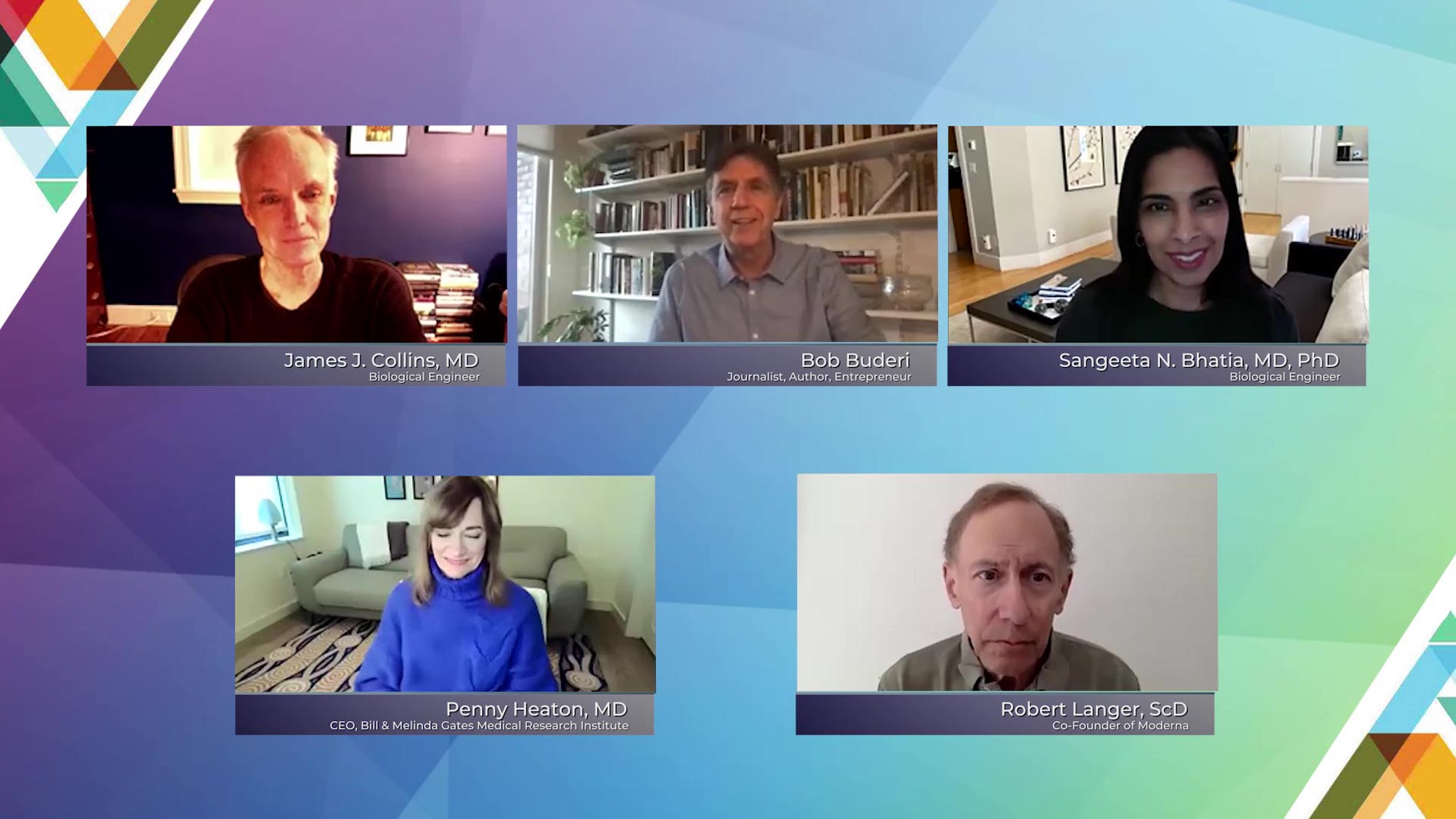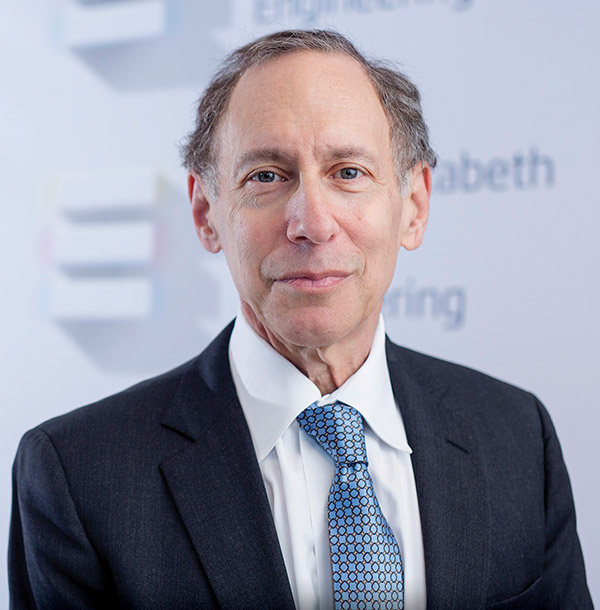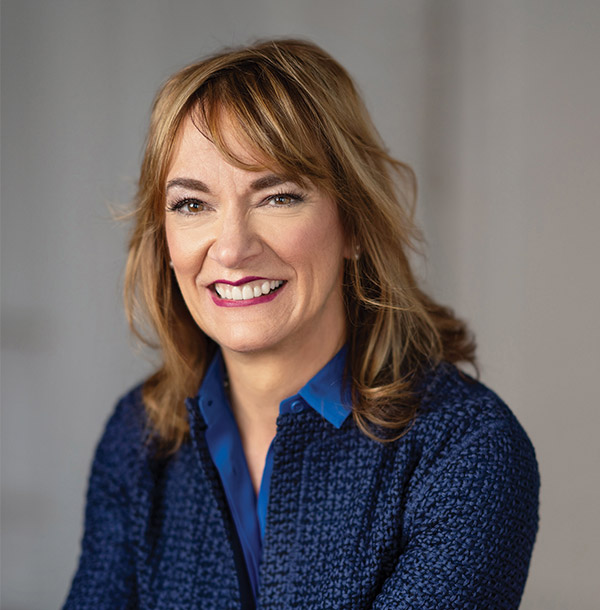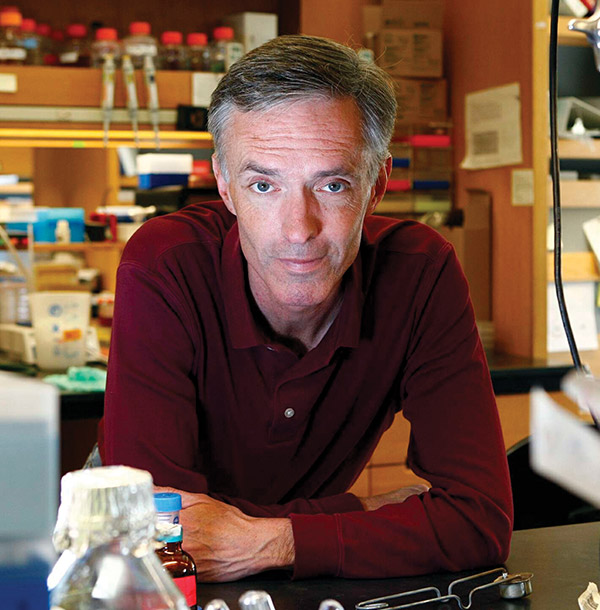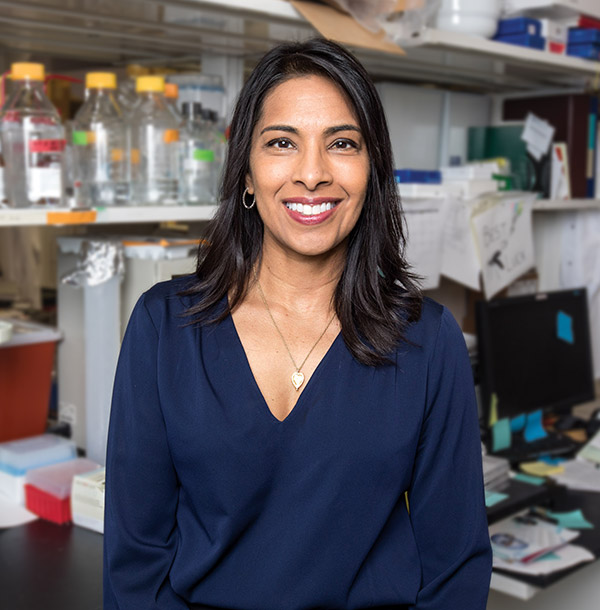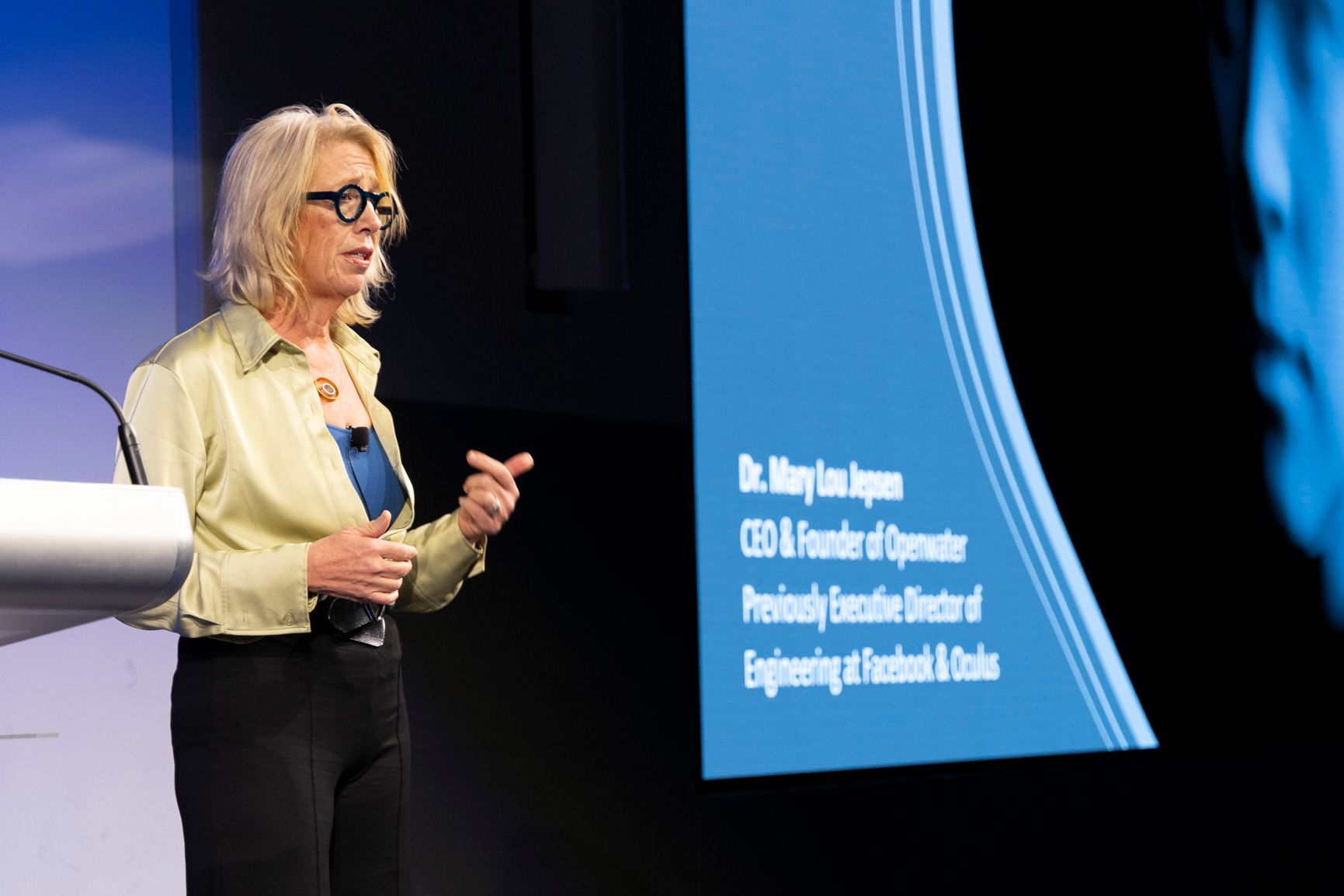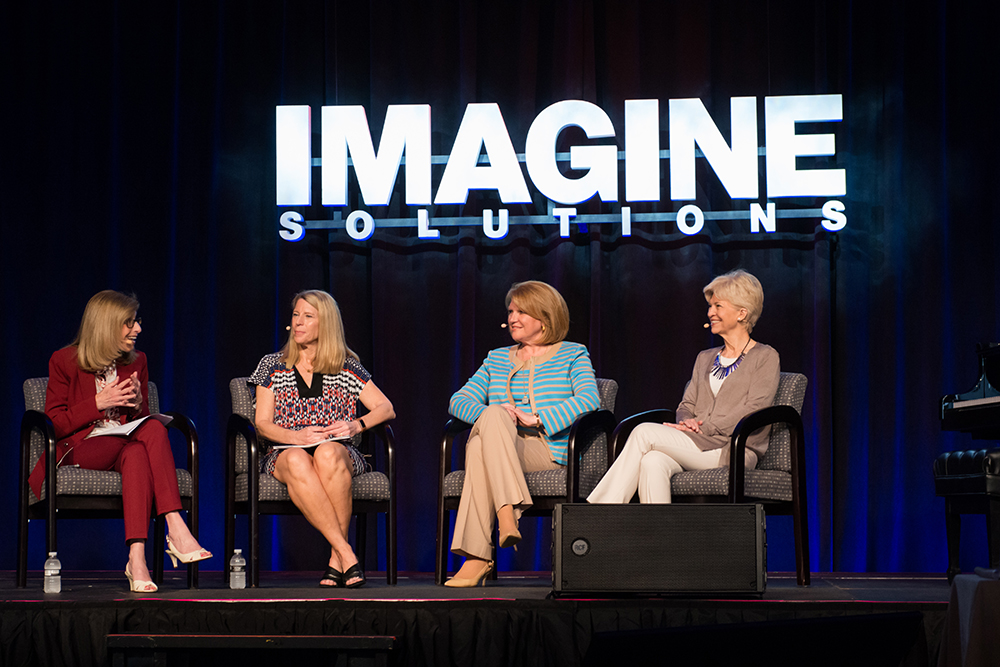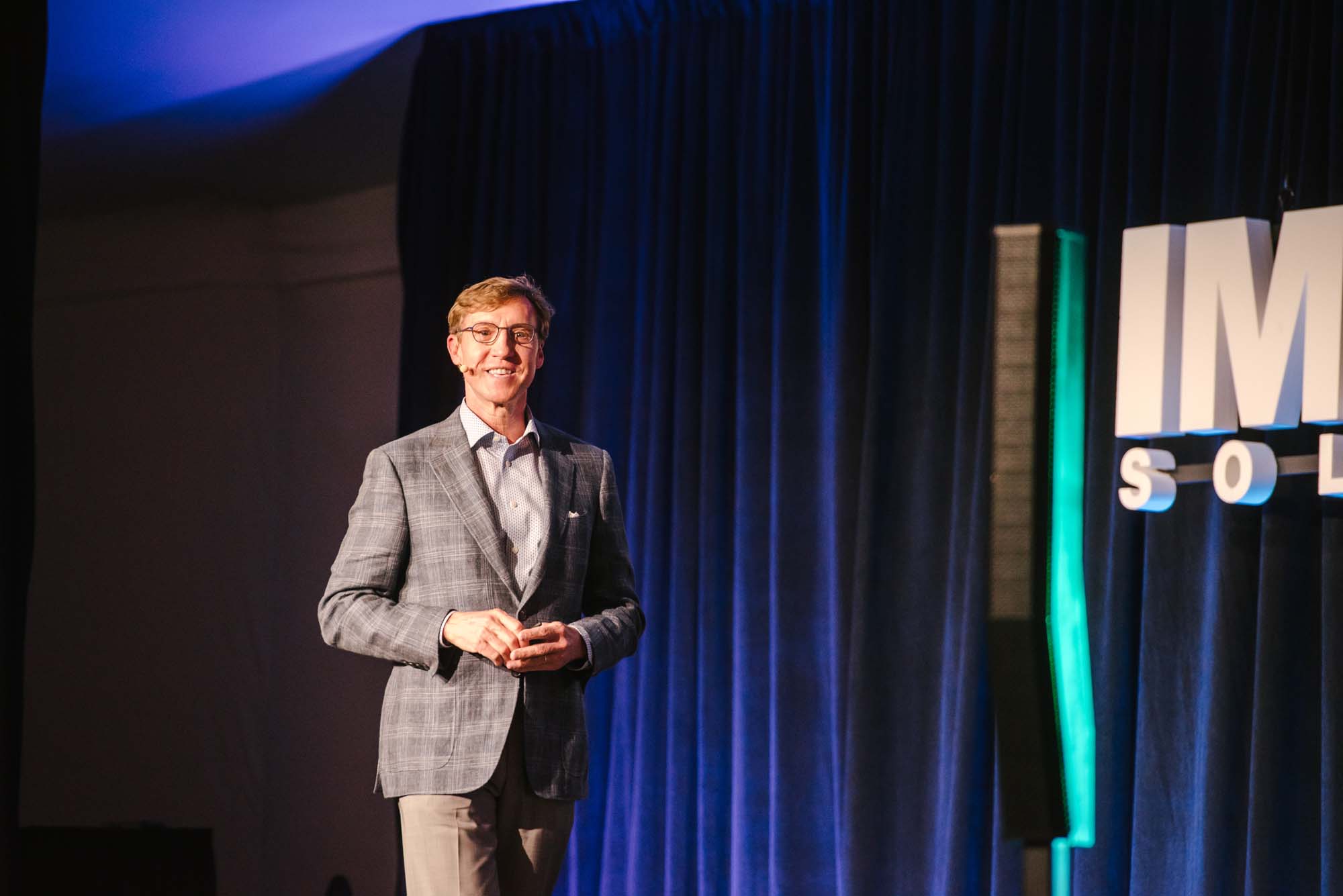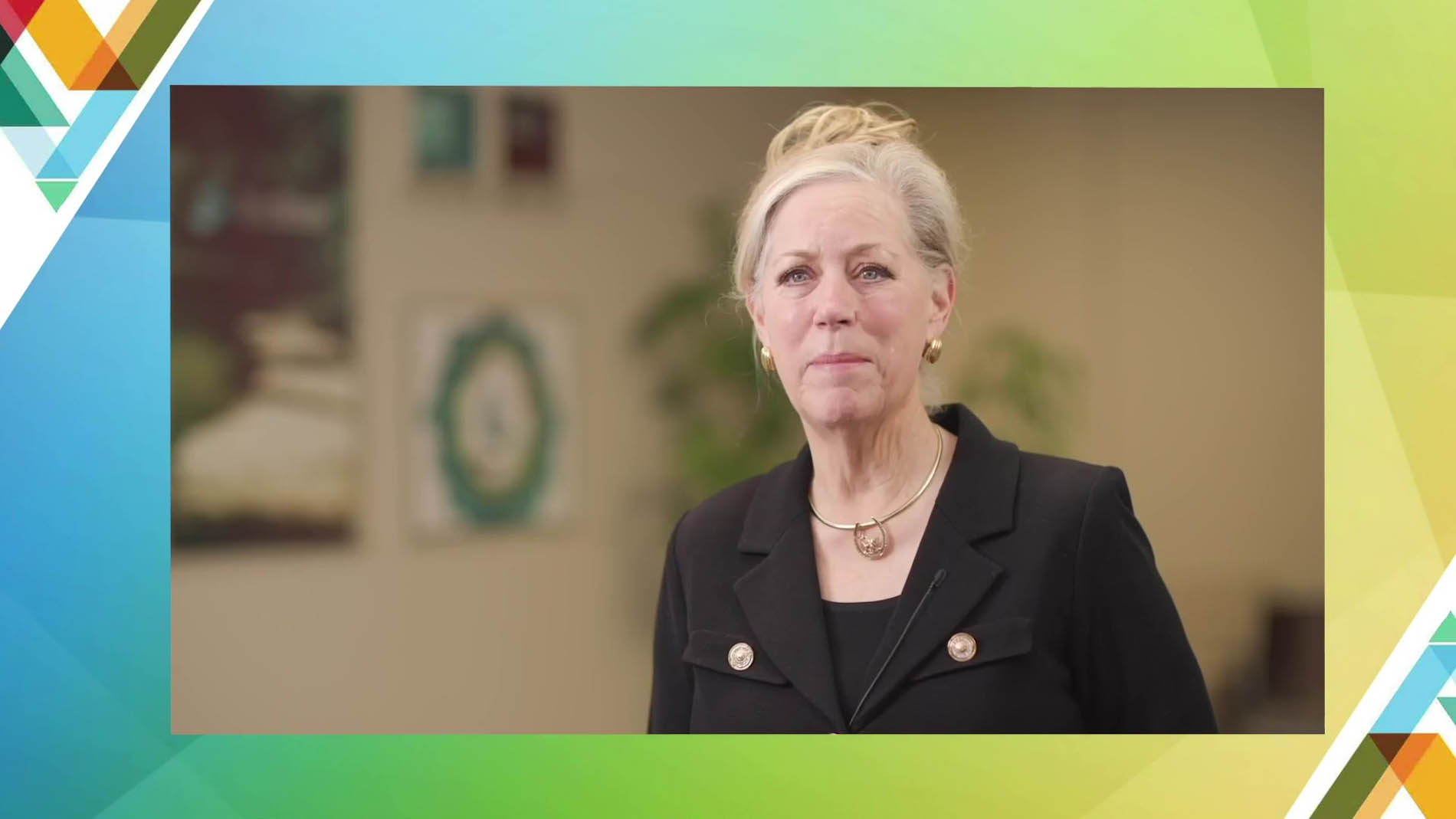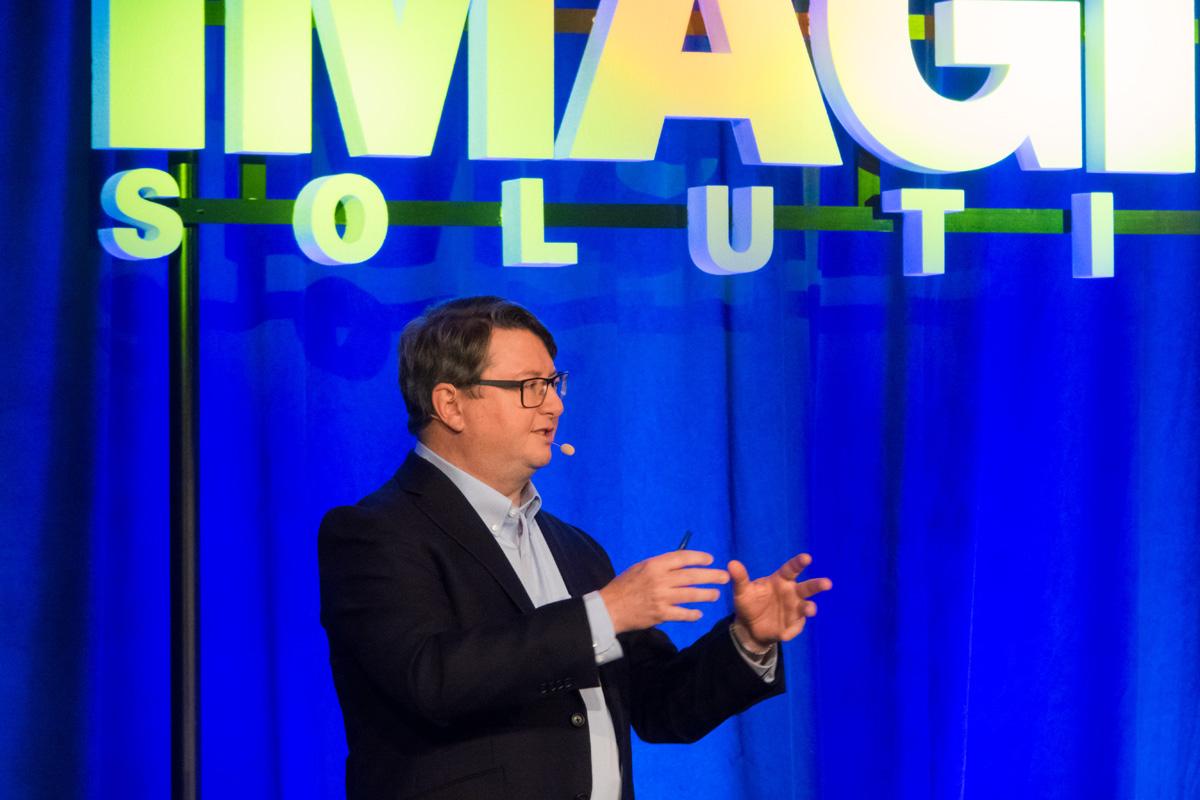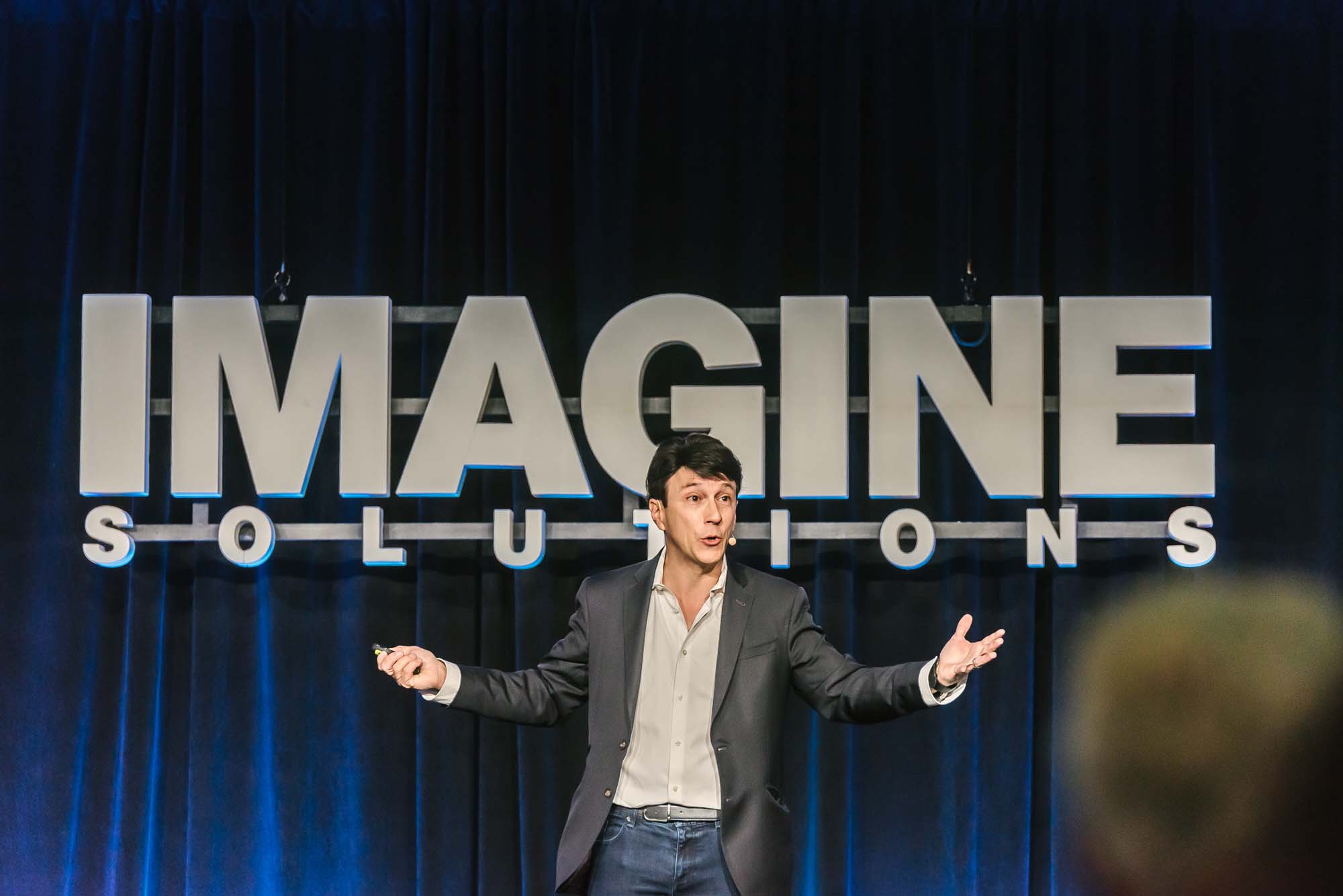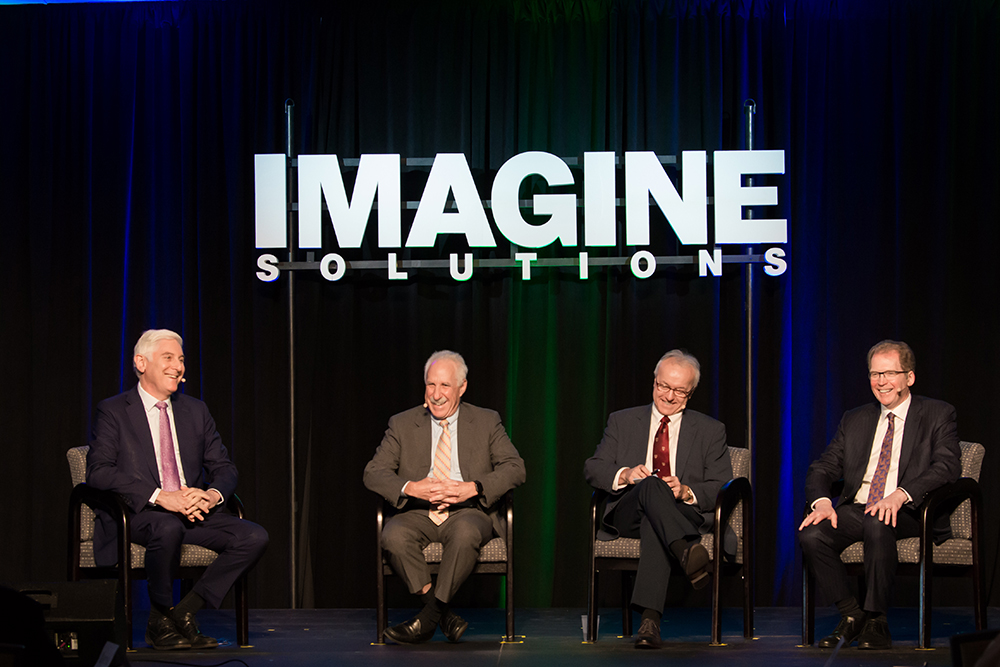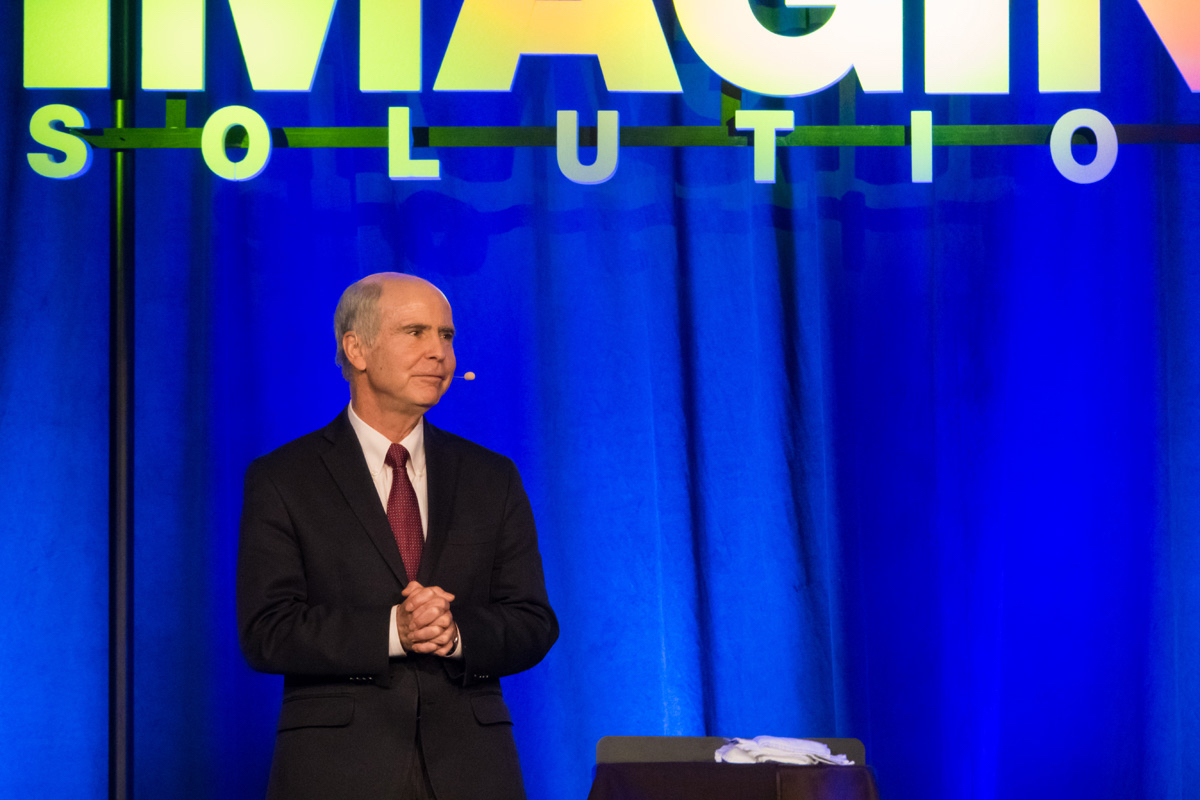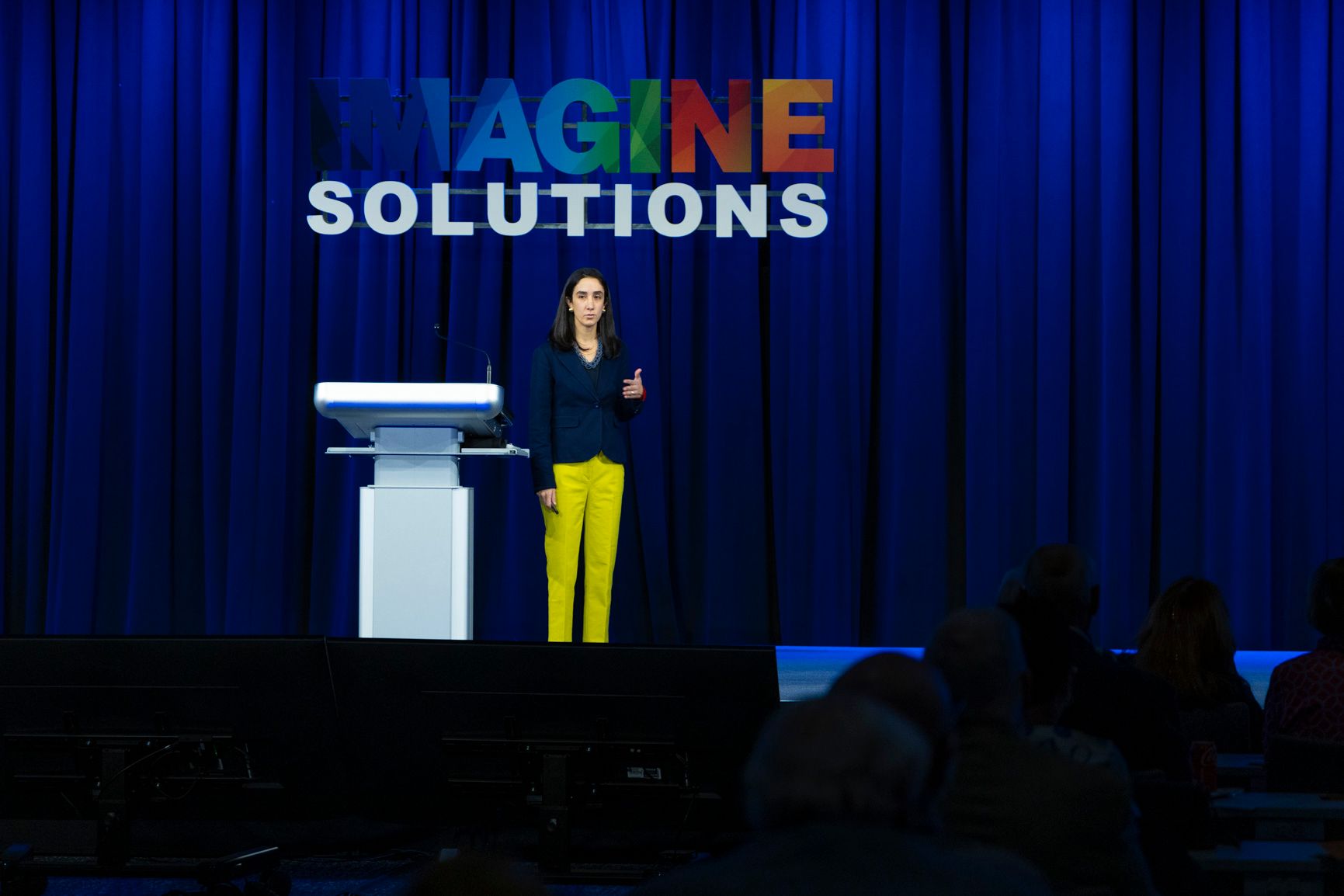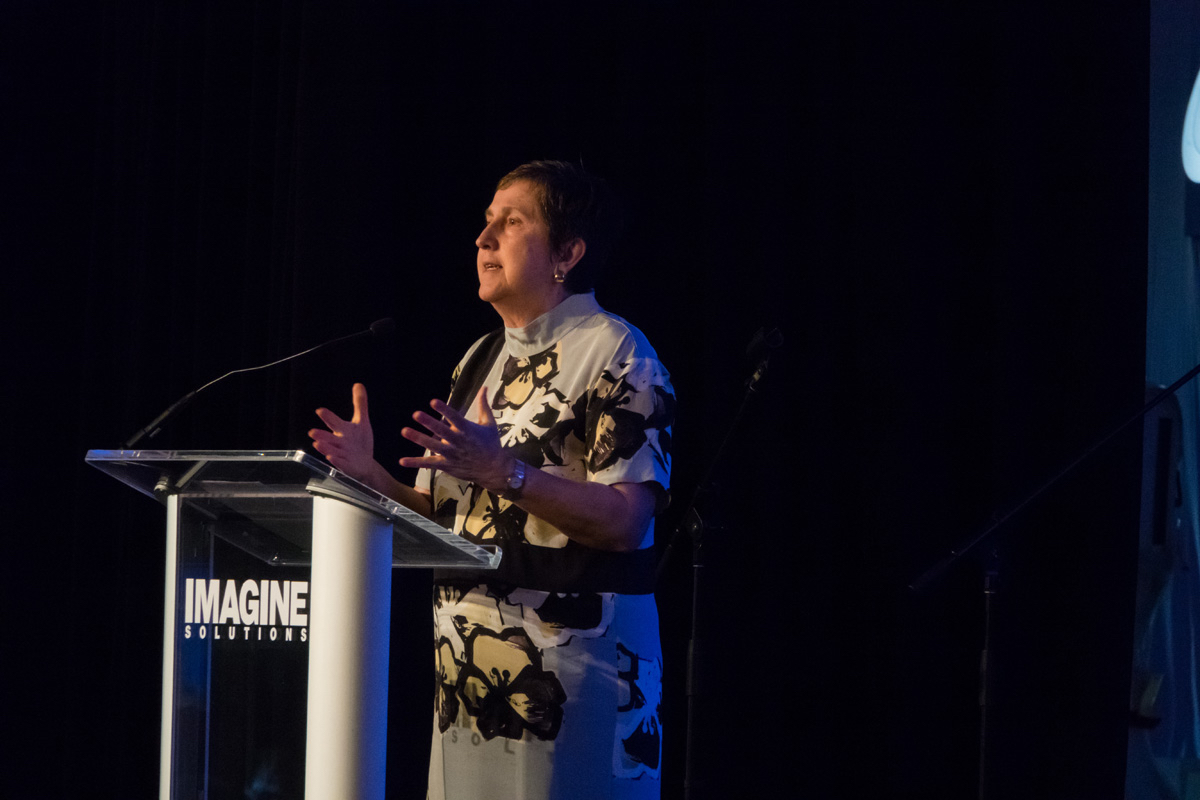Biomedical Genius Cluster
Discuss the amazing research they are involved in and what they are interested in 5 years out.
00.01
since 2009 the imagine solutions conference has gathered annually in sunny naples florida to take a fearless look at the world's biggest problems and offer big solutions to those problems driven by a profound respect for learning the conference is founded funded and managed by active involved community leaders from economics to education military to medicine arts and culture to gender and race and other subjects of the utmost importance in our way of life and to the future of our society the conference brings together top leaders from all over the world to address transformative ideas and connect intellectually curious people who want to make a difference a global perspective but a national focus an unflinching look at the biggest problems facing our world today and how exactly we can try to solve them regular attendees of isc have become accustomed to thought-provoking presentations by thought-provoking people
01.01
and in these unprecedented times we are happy to bring you that intellectual vigor and spirit once again in 2021 welcome back everyone to day two of six days of incredible learning imagine solutions 2021 virtually to paraphrase the famous wins news radio slogan give us 90 minutes and we give you the world that's the goal here today and today something that to our knowledge has never been done before for the first time ever we bring together four science superstars from the world of biomedical research but what makes them special beyond their remarkable accomplishments is that they all work within one mile of each other in kendall square cambridge outside boston we call it the biomedical genius cluster and this is one cluster where you need much more than a mask to feel at home some history now back in
02.01
the early 1970s kendall square at the back of the mit campus in cambridge was vacant land parking lots warehouses and today it is home to nine of the most important biomedical research labs in the world within two miles are 200 biomedical companies and among more than a thousand in the boston area so what have these companies done well start with thousands of patents technology licenses tech transfers those breakthroughs have powered hundreds of biomedical startups including moderna the covet 19 vaccine pioneer the scientists researchers and entrepreneurs at these companies and labs sit on the boards of almost every public biomedical company in the country and today we are honored to have four science superstars from the genius cluster though they're all too humble for words like those first is robert langer perhaps our country's most honored scientist he is a co-founder of moderna
03.02
one of just 11 institute professors at mit he has 34 honorary degrees 1300 patents and is the founder or co-founder of 41 companies next is dr penny heaton ceo of the bill and melinda gates medical research institute dr heaton and her team are changing the world by developing products to fight malaria tuberculosis diarrheal diseases among the globe's biggest killers dr sangita bhatia is the john jay and dorothy wilson professor at mit's institute for medical engineering and science and electrical engineering and computer science dr bhatia holds patents for both clinical and biotechnological applications of engineering principles and if you understand all that you're a better person than i am in her spare time she is a tireless advocate for gender equity and a co-founder of the boston biotech working group and finally bioengineer james collins
04.00
he's the premier professor of medical engineering and science and a professor of biological engineering at mit he runs the collins labs at mit and harvard he's affiliated with the broad and weiss institutes and was the first bioengineer to win a macarthur foundation genius award our distinguished scientists will be led in conversation by bob budary veteran journalist author editor and entrepreneur we have a wonderful group uh it's not it's beyond world class i was thinking it's universe class uh group of people here today innovators entrepreneurs uh pioneers um and we're really excited to have you here um the audience has your bios so i thought but i thought that reading about what you are is not the same as you describing in your own words who you are and what you do and what really ignites you so i thought we'd start off with um just a little bit you know minute or so from each of you about
05.01
how you would describe yourself so i'll just um say penny why don't you kick things off sure but thank you thank you bob and it's great to be here with everyone today yeah i would say i'm an infectious disease nerd and i've been an infectious disease nerd since i was a kid uh and that uh eventually led me into a career in pediatric infectious diseases and after my fellowship i went to the centers for disease control in atlanta and i learned how to work up outbreaks like the pandemic we're going through right now uh and but i had a study in kenya where i saw firsthand what happens when poverty collides with infectious diseases and that changed my life forever so i've been looking for solutions ever since and uh that's why i am at the bill and melinda gates medical research institute in kendall square today still looking for those solutions
06.01
fantastic bob yeah so i'm i'm a chemical engineer um by training but when i finished my degree i did something that chemical engineers didn't do at the time this was the 1970s and chemical engineers generally went to the oil industry and i ended up going to children's hospital and was the only engineer there and but that got me really excited about what you might be able to do you know with in terms of engineering and chemistry to medicine and so i've spent really my whole life doing that and actually i've had the great pleasure of interacting with uh penny through the gates foundation sangeeta and jim and and you all a different way so it's a pleasure to be on this uh this panel with all of you great well we're definitely going to dive into uh what everyone's doing sangeeta you're am i next to my screen great well hi everybody uh yeah i am
07.02
let's see i'm the daughter of immigrants and i was raised outside of boston went to public schools and then trained to become both an engineer and a physician and have really been drawn to that kind of intersection my whole career my specialization in engineering is nanotechnology uh which really came about because we were all trying to make our computers faster and make computation portable and those teeny tiny circuits turn out to be really useful for transforming medicine so that's kind of the intersection that i live at i work at mit now and i run a lab so i get to be an inventor and a professor and a five-time entrepreneur and also i um they're not as many women and engineering and entrepreneurship as one would like and so i've become a diversity advocate as well yeah we're going to talk about that as well and jim so i'm jim collins i'm a bio
08.01
engineer at mit and i come from a family of engineers and mathematicians my dad is an electrical engineer who was part of the aviation industry and there's a lot of talk about moonshots in today's scientific world he was part of the moonshot and his team developed the altimeter for the lunar module for the apollo 11 mission that landed the first men on the moon and i was brought up in this environment where we saw all these cool technologies my dad was bringing home and became inspired to go into what became bioengineering when i saw both of my grandfathers become disabled one lost his vision and the other had a series of strokes and i saw all these great things my dad's companies and colleagues were creating to shoot stuff up in this guy and shoot stuff out of the sky and i saw absolutely nothing being done for these two men who i loved very much to restore function and allow them to live their lives fully and became intrigued about this idea of using engineering
09.00
in biology and medicine really before bioengineering got established but initially worked on devices in my first decade to restore function including to stroke patients and at the end of the last century which is funny to describe it that way but the 90s became intrigued to what engineers could do in molecular biology and help launch what became synthetic biology which is a big focus for our lab now around creating living diagnostics and living therapeutics and we also have a big mission to advance engineering approaches for the discovery development design of new antibiotics and we recently launched what we're calling the antibiotics ai project of using ai to really address one of the existential crises facing humankind which is the emergence of resistance against the backdrop of a drying up pipeline of antibiotics to see if we can use the power of ai to address those gaps wow well that's um you know we're going to get into
10.00
these fascinating fields a little bit as we go along i think some of the themes that already jumped out is that that uh at least with bob and jim you're both engineers and and i guess uh sangeeta do you consider yourself an engineer as well yes yeah and these are fields that not so long ago you didn't think of in medicine and and yet you've applied them to medicine uh and to healing uh to diagno diagnosing and in some cases gym like to creating new organisms right yeah you know it's interesting i i think that the introduction of engineering into medicine really finds its roots on the heels of world war ii as technology was being advanced for the military but also you had soldiers coming back that were missing limbs had lost function and so you saw engineering applied to medicine still from the device side the inorganic where you saw prosthetics emerge you
11.00
then saw a move towards using electrical engineering to get after a cardiac space and so it was still largely more on the inorganic element up until you know say just a couple decades ago as bob and others really begin to advance tissue engineering so really becoming the wet side of engineering on advancing us now to create new tissues that could be advanced we got intrigued of now moving could you go even lower could you go sub-cellular and begin playing with living cells and their components and i think what we're going to see in this century is the emergence of engineering biology as a dominant technology meaning of using really biology as a substrate biology is not yet an engineering discipline and still gets in the ways of our best thoughts and best designs but i think we are increasingly moving toward organic and interesting the interface of organic and inorganic
12.00
to address some of the biggest challenges we face as humans bob why don't you pick it up from there and talk about the tissue engineering and then how how you see this uh this intersection playing out yeah well i thought jim gave a great description i i think that uh well tissue engineering just to go over that i mean there um the idea we had was that maybe someday you could create and i did this uh with one of my collaborators jay vicanti who was a surgeon um you know back in the early 80s is that maybe what you could do is make new tissues and organs from scratch really any tissue or organ so that um you know and the idea was that maybe you could have a template like a polymer template and have different cell types on it and you know that would ultimately lead to some forms of what are called artificial skin also to organs and tissues on a chip now it's gotten to be a pretty broad field like jim said and you know sangeeta what we work on i mean
13.03
lots of people work on it and um you know so it and and i think it's uh you know a lot of companies have started on on it um but by all of us and and so that that's that's it's been uh been exciting thank you to pick it up from your point of view because i know you're into a lot of this as well sure yeah i think um you know building on on jim and bob's comments one way that i like to think about it is um in length scale so if you think about the progression of engineering over time um you know what jim was describing in prostheses and devices those are are large objects instruments like mri machines that was sort of the origins of engineering in the field and as the engineering technology became able to fabricate smaller and smaller objects it turns out that that length scale so a
14.00
cell is 10 microns and a receptor on a cell is 10 nanometers and as the field allowed us to be able to make objects that are 10 10 microns and 1 micron and 100 nanometers and 10 nanometers all of a sudden we have these tools that could talk to biology in its own language um and we could build with these tools so you see now 3d printers that you can build with living cells as objects we can make nanomaterials that can package rna and enter into the body um and so so it's really been the progression of engineering to these teeny tiny length scales that now has allowed us to to be kind of on the same playing field with where the difference between health and disease lie in the body penny when you're at the gates uh medical research institute does that do do you get involved in the in the in these intersections of engineering and medicine and so forth or or are you at a different kind of
15.02
vantage point yeah so at the gauge medical research institute you know we're looking at developing vaccines drugs monoclonal antibodies for diseases that affect the poorest so tb malaria etc so we are really just waiting with baited breath if you will for all of the advances that um that bob and jim and sangeeta are making uh because the diseases that we're working on let's take tuberculosis we don't understand tuberculosis from an immunologic perspective uh we know that 90 of the people that get infected they never go on to develop disease only 10 percent go in to develop disease but by the way since a quarter of the world's population is infected that means 1.5 million deaths every year but we don't understand what's happening immunologically so what we're looking at and and what we're following very closely is the progress that's being made
16.00
uh like the organ on the chimp the the lymph node on the chip can we begin to use those tools to understand you know immunologically what's happening with these diseases and then capitalize on that data to make better solutions i mean the tb vaccine that we have in studies now it has its it's having its 100th birthday this year that's crazy right but we're only in the last decade or so have we been able to actually have the tools to understand the mechanism of action and how it works and so we're learning that oh well if we give this vaccine as a booster in tweens and adolescents who got this this vaccine originally at birth uh we can boost the response and potentially prevent them from being infected uh so um it's it's like we are taking advantage of the new technologies to figure out what we should have known a long time ago and then take it to the next level
17.02
kenny we see something similar in actually in cancer research you know where um the tools are teaching us about the disease um at the same time that they're offering new solutions um so for example in cancer we now have immunotherapy which we didn't have just a decade ago where you turn the immune system on cancer and that can be both understood better with some of these tools including things like ai that jim was mentioning as well as manipulated better for example with nanomaterials that can stimulate the immune system so i think i think you're right that we learn as we go and the tools kind of fall on both sides yeah and i think a lot of those advances send you that you're talking about with cancer vaccines or the combination of you know immunomodulators checkpoint inhibitors and cancer vaccines you know i think um you know what we're doing from the infectious disease site is really
18.00
watching that space really closely you know for tb could it be that ultimately the answer will be an amino modulator a checkpoint inhibitor with or without a vaccine so um we want you to hurry up so we can hurry up and and actually have more impact more quickly now it might be worth uh just defining a little bit more in lay terms what you mean by um a checkpoint inhibitor or in these other terms sure i can take a stab at that i think um so your uh your immune system can can fight infections with um something called antibodies which b cells make and something called killer t cells and they they infect they kill infected cells and those same killer t cells actually can surveil your body for cancer cells and what happens is the cancer figures out how to hide from those t cells
19.00
uh and so there are these new drugs uh that we were talking about uh figure out basically how to to unveil the tumor so that the t cells can find it and kill it and so you know what penny was alluding to is can you also then use the same idea to find a hidden infection like a tb organism that's hiding inside inside the lung that's great well listen um and we're going to go back and i hopefully you know we'll come dive into some of these things you're working on this is the biomedical genius cluster panel so i wanted to ask a question uh for people people know about i think worldwide they've heard about silicon valley of course but they know less about the boston kindle square cluster so i wanted to you know i try to have a little fun and ask you guys about what it is that makes this area so special but first maybe we could just do a little a
20.00
ranking one two or three where where the the boston kindle square medical research cluster ranks in the u.s in in your uh view can you hold up one finger two fingers three fingers i was pretty sure that was the answer i was gonna get what about in the world okay so now let's talk a little bit about um why that's true you know bob you've been here the longest um you you've been here for uh i guess since the 70s right or yeah 1970 yeah yeah so what is it in your view that makes this area so special why do you justify that number one ranking well yeah this is going to sound probably very arrogant but i mean if you look at rankings you know i think every year mit is ranked as the number one college in the world in engineering and
21.02
harvard's ranked as the number one medical school in the world that you know most of the time so i mean you have you know and and in addition to those two there's lots of other fantastic places like bu and brandeis and tufts and northeastern and you know i could go on and on um wellesley i mean there's just so many great places so you get all these incredibly uh bright people and they uh you know spin off some things they they they like being in boston and stay here and i think what's happened is because of of having the universities and the medical schools everything else comes with it you have the venture capitalists come here you have the law you know big law firms helping i mean so it goes i i at least that's what i think i mean it's you know the the those two places you know help make cambridge and boston unique kind of
22.01
feeds back in on itself others dive in there yeah i think bob i think your your phrase both bops i think it's a positive feedback system so i think the uh young talent and seasoned talent from the universities coupled with the venture groups and the strong law firms feeding local companies that then attracted larger companies so most major farmers have their research efforts or a research effort in cambridge and some in boston but the university's med schools have just built this community and i'll speak that i think cambridge and kendall square in particular is really quite unique and i speak from experience and i spent my first 24 plus years at bost university in kenmore square and a little over six years ago moved eight thousand feet into kendall square over to mit into a dramatically different world where i literally am walking down the street and you're bumping into venture capitalists or key entrepreneurs and there's just so much more activity going on in that the
23.01
density and close interaction the community is not been reproduced in other spaces and i think it's very much to be said for the geographical cluster we now have in kendall square and i think back to my undergrad days in the 1980s kendall square was barren i never felt comfortable walking around luckily i was a competitive runner so i had no words i could outrun almost any person coming after me but it was a barren set of abandoned lots for the most part uh that have now it's hard to find open space that you could put up a new building i i agree actually completely um with jim that there's something about the density which is really magic um you know that gives you that serendipitous bumping into people meeting them in the elevator seeing them at the coffee shop um i actually i moved further away jim after i trained i went all the way to california um and i realized um that i was really addicted to the density of kendall square and ideas
24.00
and it is actually an intellectual destination for people around the world right i mean i think people we pull talent from everywhere to this like tiny little space and then they bump into each other and feed off each other and create that feed-forward loop that jim's talking about yeah yeah i want to uh penny you you were you just found it or you opened the medical research institute just a few years ago you had your pick of places around the country at least if not the world what brought you here yeah and it's exactly what everyone's been saying so the gates medical research institute we launched just a little over three years ago and um we of course we did look at several places in the u.s including you know bay area philadelphia the dc area etc and ultimately selected uh this area in kendall square for all of the reasons that that you all have been saying i mean we at the gates foundation
25.00
believe that all lives have equal value and everyone deserves the opportunity to live a healthy and productive life uh so when thinking about that in the context of developing products against diseases that disproportionately affect the poor the idea is you want to bring the latest cutting edge technology and the best talent to these diseases and so where else better to do that than you know the biotech capital literally of the world and i often give the example my very first day uh going into the we work space with my one administrative assistant and a bunch of job descriptions when we were getting ready to open it i was on the t and i was sitting across on the red line it's sitting across from someone and i was listening and i was like hmm that's a statistician oh they're designing a study oh it's an adaptive design oh that's really cool now i never heard the product and i don't know you know exactly what the study was about but this is exactly the kind of place where you can hear that conversation
26.01
while sitting you know on the subway so um yeah that that's why we chose to be here and the partnerships that we've developed just in the the short time that we've been here it's been amazing and we are really excited about the progress that's being made i was uh you know it's it's said it's on the kendall square association website the most innovative square mile on the planet i actually found the guy who coined that term and he and he and he likes to uh it was he's for boston he worked for boston consulting group in 2009 or so and he said it was only because he didn't have a chance to survey the rest of the universe that he praised it that way but i've i mapped it out and it's actually a square half mile kendall square even under the expanded definition it's so dense that you really do run into people i think one of the other things that that's
27.01
kind of alluded to is the starting of the companies and the ability now bob you've i think you're up to 41 it was like two new companies while i've been talking to you uh my students are working hard but you you said to me that virtually all of them at least start out in kindle square you can walk to them you can consult with them uh maybe talk more about that ability to kind of go back and forth between um the world of academia and the world of entrepreneurship yeah well i think first of all i think an awful lot of the students who work with all of us jim sangeeta and myself at mit you know they you know they work hard on their projects and a lot of them want to see them make their way to people to do the kinds of things that that penny said and and so you know almost every company i've been involved in
28.00
starting i've done with the students because that's something that they want to do and and and the great thing about the cambridge area and being you know all the things being close like lab central and other things is that you you can walk to them back and forth and and and so it's it's like jim and sangeeta said there's this giant infrastructure that just keeps getting bigger and better and and so i i just think it's been a wonderful career for them and and and so that and and they've really enjoyed doing that they want to make a difference in the world and it's been a great way for them to do it and you know for me it's been a really a pleasure to to work with them and to work with uh you know the investors and the business people to try to make things happen so you know we did it and you know and we just will probably keep doing it um you know as long as as long as i'm able to yeah um maybe sangia you're two of your new companies starting in
29.01
lab central i think um maybe you could just explain take people like out your door of your koch institute lab how far you have to go to interact with a the company you found yeah sure yeah so so one of the companies is called glimpse bio um and you know just to um to rip off of what bob was saying so you know the students you know had the aha moment and we published a paper and we thought that if we wanted to take it to patients um like penny was saying that we needed to do a startup and you know so you could just be in the building and walk around the building like i could go up to bob and say like is this a good idea and if it is who should i call and then you get an introduction to an investor and then you find the people the business people to help you so that all can happen very quickly without going very far and then once the company was established we put it in lab central which is at 700 uh main street we're at 500 main street
30.01
and then they licensed the patents from the technology licensing office which is just another sort of quarter block away so you know it's it's all um incredibly co-localized that ability and and jim i i don't know what was at bu because you started companies when you were at bu as well um but a lot of universities still have that kind of ivory tower feel to them and maybe mit had a head start by not having that it's its whole makeup was about applying engineering to society but is there something about that um attitude that it's okay to go from academe to industry that's different in in this area you know i think we've seen a large-scale change in attitude across the field within the academic space i i started as a professor in 1990 and at that time it was still viewed as kind of dirty if you
31.00
were doing translational work and that the pure were doing the basic work that changed through the 90s in part from pioneering work by bob in part by people seeing more more on opportunities and i think there's been a very healthy attitude change in as follows that now in even academia the emphasis is increasingly on impact and certainly we can still have impact through discoveries and publications and citations and through training our students but increasingly even within the academy there's the question how many lives have you touched and how many lives have you touched through maybe introducing a product or platform and people are viewing that as a very positive outcome and not simply profit motive and i think mit harvard i think kendall square has played a huge role not only from the early biotech revolution but now this next wave it's come on its heels and i think we're increasingly seeing professors also being accepting that their young trainees don't need to be
32.01
simply clones of themselves to become other professors but that there are viable innovative very rewarding routes through other non-profit and for-profit entities which is great but i'll spin it the other way as well i think in some fields we're seeing a problem and as follows you know i really respect all that bob's done to view him as a true role model and that he stayed in academia and we have the flexibility where he can spin out a number of companies be involved but not necessarily run them and we're seeing in other fields like computer science ai deep learning that the field is making it for so attractive to basically diminish who's still in academia so they're eating the seed corn and so we're not training this next year we don't have enough people to teach those there are new models coming out where people now are splitting appointments with facebook google and a particular university but i'm worried that some fields are pulling away the train the folks that can train the next generation just by dent of the of the the the
33.02
the how much money they can make or i think it's two things bob so we've always had the battle with industry of what talent we can recruit whether at the postdoc level or as professors we never compete on salary but we compete to give them freedom and to do innovative creative things but now these large companies are offering these amazing resources and the freedom to do creative innovative things so now if you're going to be paid 10 times more than you would as a professor and you can still run a group of 20 people doing cutting edge blue sky work then you can publish you'd be an idiot not to take that option and and that's the model we're running up against and fortunately i think some of the bigger groups are now recognizing that they need to give us back talent at least part time to continue to train the next generation well i think what jim said is right you know and i i actually don't it's kind of thinking of a funny story you know mit wanted me to go i think it's called renaissance capital it uh i i never really you know so they i was
34.01
giving this like and i you know i really didn't know what it was and i you know i but you know you want to always help mit and stuff like that so i went there and i i really should have read up on it because i really didn't know what it was and and and i remember getting there and they had this like fantastic lunch you know 40 kinds of sushi and everything and and you know and i spent like an afternoon talking to different people and i thought my god these people were all former professors at places like berkeley and caltech and all these and they were incredibly smart they asked all these questions you know and then they were really like incredibly good questions and i you know so i tried to ask them a question or two about what they were doing but they sort of didn't want to explain it which i felt okay you know i'm there to help mit raise money you know so then um you know i i i remember after we had the dinner i i i well i did ask one of the women i said well why
35.01
why did you leave berkeley because you know it's such a great school and you know to come to this place in long island and she sort of had said well i guess it's about the money you know and and and so i remember like when i was flying back i decided to check out you know be in the car i was looking at my uh you know it looked at the internet to look up what it did and i saw that like this was like this hedge fund thing and they had like 80 percent return every year or something like that so then all of a sudden i understood and and i think that that that that's a whole other area you know people you know who are just incredibly smart going into hedge funds and and and they do incredibly well in fact i was you know on the board of trustees of cornell i've been on other sort of charity boards and you know i'm there's a very large percentage of hedge fund people on all of them because they make so much money and i think that in fact i remember one of my daughter's friends he was at
36.00
yale and she said something like uh that 25 of the undergraduates their goal was to be a hedge fund manager so i think what jim said is absolutely right i was only expanding it to other areas as well there's a book new book out bob called the man who saw the market by greg zuckerman that tells the story of jim simons who is the founder of renaissance capital and jim you know he was a professor at math professor stony brook who used machine learning to make predictive models of the market to create this incredibly successful hedge fund yeah no i i was funny because greg i've gotten quite a few calls from him he's now writing a book on covet vaccines and moderato but even math models aren't very good they they just had 20 to 30 loss this past year so they have not is that right that's right wow so yeah so i went two two or three years ago that's good well you know i think maybe a counterpoint you know which is living together with this i agree this this huge influence on the students especially in computer science i have a joint appointment
37.00
um in computer science you see the students get recruited even out of the undergraduate you know with these gigantic salaries that jim and bob were talking about i think the encouraging thing that sits side by side with that which is that this generation students that's growing up with social media and worldwide awareness are actually are really activists in many ways um and they are really aware of the state of our planet and and global health and so i think i really i'm really encouraged uh by you know a set of students who are so oriented to impact um that they're willing to work on things like global oncology so cancer care around the world which you know a lot of people don't think about um and so i think it was interesting i mean you sort of have to hold these two opposite ideas in your head but i actually think that our student body has both of them well penny you're in the non-profit world what do you see in in you know in terms
38.02
of the motivations of the young people and so forth yeah i mean i think i i agree with sangeeta i i just love what i'm seeing today as far as the generation that's finishing their training and coming out i mean if you think about our mission at the gates foundation in the gates medical research institute you know to develop products uh where tb malaria enteric diseases maternal newborn and child health our those problems aren't going to change we just have to figure out how to identify the solutions but the problems are there it's not like we can say oh we don't want to work in infectious diseases anymore we don't want to work on tb we're just going to set that aside you know that's that remains the leading infectious diseases killer uh in the world and so we have to figure what the solutions are regardless of where those solutions might come from so it really does mean working you know
39.00
across the aisle with you know we have academic partners we have you know big pharma partners we have biotech partners we have public health partners and um that's just an important part of what we do so i think um and and i think that's part of what i see and what sangita was referring to is kind of the activist side of these you know segments of young people coming out they see the problem and they're going after the problem and thinking creatively about how to break down those silos to find the solutions well this seems like a good point to ask some questions about um that the skill set and the talent set of the future like what you guys see you talk about your fields that in many cases are the convergence of different technologies um jim's talked about ai as well and sangeeta about computer science uh what what do you see as as the kind of
40.00
driving forces for the future in terms of uh what types of skills what technologies will be coming together and what students you know might need to have to succeed i think this is maybe an unexpected answer that that in addition to technical depth which you absolutely need to be able to sort of synergize with someone in another field you need to have a place of depth of your own that more and more we're seeing that our trainees really need to be strong communicators you know with each other with venture if they're raising money to be leaders and and really important in this moment also with the public because we need science literacy we need trust in science and so you know we're really finding that we have to in this generation of trainees we have to be deliberate about our training um and
41.01
and have students invest in that conversation with the public because for so long it was just like publish a paper and talk to each other um and and that doesn't allow people into sort of like the beauty and the magic of what we're doing and so i think you know the moment communication is i think one of the most important next-gen skills very interesting well that i'll maybe jump on that i did build on cindy's point you know i think a few points that are lost on the current generation of young talent that would make differences one i think content matters and i think young people need to be willing to put in the time to really have a strong fundamental base understanding across a good number of disciplines and then make the commitment to become an expert truly a content expert in the area or areas they want to get into and i related to my next comment is
42.02
they the young people need to use their best resource which is their brain and not the machines we have at the end of our hands whether smartphones or pcs and the ability to look up stuff is is so different than actually knowing something and if we're to remain innovative the best device is our brains and it's to make connections between those stores of content that you worked very hard to establish in your head to see connection to things maybe somebody didn't see before two is yeah i think communication absolutely critical uh and probably the most important thing most of us could speak to that we got from our undergrad in training and probably played such a big role in our careers and related to that i think that young people need to disconnect from social media in order to improve communication and to be comfortable to send you this point with themselves and to not always be comparing to what
43.01
else is happening and to you know to be comfortable in themselves and that's the end point of my third point is that i think young people should put in a habit of spending time with themselves every day just thinking about interesting thoughts leaving it open and being comfortable and that you could spend that time maybe you don't come up with anything but it's taking that time to ruminate inside your head whether on a walk or a run listening to music and doing nothing that we're always checking checking checking checking checking checking everything nowadays all these platforms and it's become a distraction and i'm worried that we're going to be have a reduced innovation output from this generation because of the technology that's been created very interesting you know you reminded me uh when i was a little kid and i complained i was bored my mother told me you should never be bored because when you're alone you're in your own best company yeah i thought that was really great and
44.00
it helped me to not be bored and to think in in those kind of things yeah well i you know i'm going to switch gears a little here i want to hear i know the the audience will want to hear some of what you're all working on you know some of the two or three projects that are you're working on now that light your fire or that you're envisioning right over the horizon um and uh so you know maybe penny you you you could start things off sure absolutely so uh as i alluded to earlier our number one priority at the gates medical research institute is tuberculosis because of the massive mortality uh from it every year you know 1.5 million deaths looks like having a covet pandemic but every single year so it's it's insane uh so we're working on both vaccines to prevent disease and then we're working on uh drugs uh to
45.00
actually treat the disease until a vaccine comes along so it's such a tough problem it's not one that you can tackle alone so on the drug side on the therapeutic side um we are working with a consortium of four pharmaceutical biotech companies and are in the gates foundation our parent organization uh to look at um different drugs that can have activity against tb so for those of you who don't know about it uh the way you treat tb it takes four drugs for six months or longer in order to treat it it's just a really hard disease to treat if you think about an organism that has learned how to live quite happily with humankind uh you know for 15 000 years it's a pretty clever organism so it's pretty hard to treat and um so instead of having four drugs for months and months and months on end and they have horrible side effects what we are looking for is a shorter simpler safer drug regimen and to prevent
46.01
resistance from occurring we need to use drugs with different mechanisms of action so the likelihood of you know two or three four drugs coming from a single entity is really really low so this is one of those big hairy problems that just requires incredible collaboration and that's why we're working with this consortium this pan tb consortium to identify new drugs and bring them through the pipeline and to the patients that need them so we're hoping to actually start with clinical studies of our first novel tb drug regimen by the end of the year i'm really excited about that and then as i alluded to earlier we also have uh the hundred-year-old tb vaccine but in addition to that uh we have a tv vaccine that we unlicensed from glaxosmithkline uh that is fascinating because it it doesn't just prevent infection but it actually prevents in people who are already infected it
47.00
prevents progression of tuberculosis to pulmonary disease and death and so it's it's interfering somewhere in that progression uh and so we're looking at on the immunologic side trying to figure out how it works we already know from a clinical study that was done before the vm license that it does work and so we are getting ready to take that uh into uh clinical trials as soon as we get new clinical trial materials made uh so those are just a couple of things i could talk for hours about all the things that we're working on um but but really really exciting stuff uh one thing i would like to to mention that we're super excited about is the rna vaccines you know that they're using for covid well before the pandemic we had already started to look at collaborations on rna vaccines for tuberculosis and for malaria and uh now with the pandemic maybe one of the silver linings is that those programs can be just greatly accelerated uh because of all the knowledge that has
48.01
been found out from the work on the pandemic well let me just ask so in all these years there hasn't been an effective tv vaccine there's this why can we do covet in one year and great question that's what i keep asking my team if we can do covet in one year we've got to speed up the tv programs uh but uh you know it it's it's fascinating i mean i think you know quite frankly um because tv was controlled through dr through drugs you know different different uh therapeutic regimens uh in the 1950s and 1960s in the u.s and europe in high-income countries uh then the funding and the investment and further advances in tb um they just weren't there and you know in fact still the funding envelope globally when you look at tbb research is is just abysmal and
49.00
um because of that the advances just weren't made that needed to be made and of course when the foundation was formed in 2000 uh they uh targeted hiv tv and malaria but but the other thing is tv is tough it's immunologically really complex i would say it's really only in the last decade that we've been able to have the tools to even understand the disease level that we need to in order to be able to develop vaccines covet is so much easier by comparison uh tv is really tough well it seems like a great segue uh bob you one of the founders of modernity that made this vaccine that's making it that that's now getting out um you know maybe talk a bit about uh what the vision was on that and then you know some of your current projects as well well i think you know moderna's goal has
50.00
always been to try to you know make our you know messenger rna therapeutics you know and and quite a few of the examples of that are our vaccines i think you know there's nine or ten in fact a lot of the gates foundation has been very very supportive of of moderna and that that's that's been terrific and the gates foundation has also been very supportive of our lab so that uh so when you get to projects that we're doing you know that's how i first met penny and uh you know we have quite a few projects with them some aimed at some of the things she's talking about we're working for example on a way of uh single step you know you hear about how you have to do multiple boosters or multiple shots you know we're working on a way again a lot of this is for the developing world but it could be useful for our world too is is that you could give a you know we published a paper in science for example that was fully funded by the gates foundation and where we came up with the way ann and jacqueline in our lab led this and where you could give one
51.01
injection but that single injection because of the way we designed the micro or nanoparticles would have about 12 bursts so you and we can time the burst whenever you want one month two months a year and so forth um another project that we did with the gates foundation that actually led to uh lyndra which is a company we we we started um and it's actually relates to something sangeeta mentioned i i'll have to ask her if she'll know another company like this the the chairperson of the board the executive chair of the board the ceo and the ceo uh are all female and uh it's it actually and it didn't happen because i mean you know the science all came out of our our lab that the gates foundation funded but basically they were interested for treating malaria and other diseases could we come up with a pill because pills are you're going to be more likely to you know take than other things like shots you know that that could last for a week or a month you know so they're we're coming up with
52.00
a once a month pill for birth control once every two week pill for malaria and so forth and we are working along the lines that you know penny mentioned ways of geo traverso who worked with me and now as a professor at mit you know developing uh pills that you might or systems you could swallow that might be able to have a you know even a hundred grams this is for tuberculosis that she was talking about not for vaccines but for drugs um and and and so uh and we're working on new ways of giving micronutrients to the developing world aside from the gates foundation projects we have a lot of others we're also working on pills you could swallow that could deliver proteins and maybe someday even rna or dna and we're working on all kinds of regenerative medicine things everything from trying to help people who are paralyzed with spinal cord repair to new ways of restoring hearing to nutrients diabetes wow that's one of the the things here is
53.01
that there's this it's not just an incremental a lot of the projects you're talking about you're talking about big changes that really make a huge impact and i think that's part of the culture uh in in this kindle square uh boston ecosystem um sangita why don't you talk about some of your projects sure yeah i mean i think alluding to jim's earlier point which is it's helpful to have depth um i've spent my whole career obsessed and in love with one thing which is the liver alcohol in any way um yeah actually you know if you go to a liver conference the joke is that you know we're all keeping ourselves in business you know at the happy hour but um yeah so you know it's it's been a it's a fascinating organ it's the size of a football it sits under your rib cage and um it has over 500 functions uh and it affects 500 million people worldwide a year so it's it's liver diseases is what
54.00
people call a stealth epidemic you know feel it always when you're sick and it's it's really kind of quietly amongst us most recently there's a disease called fatty liver disease or nash non-alcoholic steatohepatitis which is going to be the biggest cause of liver transplant so um you know it's a sort of underappreciated organ it's a factory and we really don't know much about it and so a lot of the technologies that i've been developing in my lab have been things that allow us to see how the liver is doing little nano sensors that can enter into the liver and tell you what the micro environment is like and then you can you can have a urine test so it's like a shot and a urine test and it tells you how your liver is doing instead of getting a biopsy and that became the foundational technology for a company called glimpse that was in lab central that we were talking about earlier and then we've been coming up trying to come up with a way to actually replace transplant completely which in spite of
55.00
being a amazing procedure that's life saving is actually still really hard to do it's hard on the patients and you have to wait for an organ to be available so we're making little off-the-shelf implants that you would put in the belly in a minimally invasive procedure that would provide enough liver cells for patients to live without getting a transplant at a kind of a satellite location and that became the technology for satellite bio which is another lab central startup and is really inspired by bob and jay's work so many years ago where they sort of invented this idea of using cells as living medicines so i'll stop there but but you know if you spend some time with me just like penny could talk about tv i could talk all about the liver and jim please tell us some of your uh exciting projects so i'll mention three so the first is in this idea of wearable synthetic biology
56.00
so a few years ago we showed that you could take cell-free extracts along with synthetic biology constructs spot them on tape or freeze-dry them and then reactivate the freeze-dried spots sometime later with water or a patient sample and reactivate the transcription translation processes to create what we then used as paper-based diagnostics nation's brain about resistance and for ebola zika and we've done some for sars kobe 2. two years ago we showed that this could be extended beyond paper to clothing of various forms and move towards creating wearable diagnostics for first responders for healthcare personnel for military personnel athletes detecting pathogens metabolites produced by the body as well as if you're exposed to a nasty chemical agent but in the face of the pandemic we pivoted the project to develop a face mask diagnostic four-source kobe 2 and we are as i speak finishing the studies to show
57.00
that you can have an insert added to a face mask based on this freeze-dried self-resynthetic biology that can with high specificity and sensitivity detect stars cova2 relative to other circulating coronaviruses as well as detect influenza so seasonal flu so we can give a readout similar to a pregnancy test after wearing the face mask for only an hour or so and it's a very very low cost insert that can be added to any face mask the second project is really on recognizing that much of synthetic biology has been in the bacterial space but is really emerging strongly in the mammalian space and i think in the next decade or two will dramatically impact gene and cell therapy and in the spirit of modern and other efforts we've been focusing on how you can use synthetic biology to help advance the regulatory aspects of mrna therapeutics those delivered for gene therapy but also those delivered in say a modernity fashion say with engineered liposomes and amongst other things we've now developed mrna-based switches
58.02
where you can repress the translation of an mrna and have it turned on by one or more other trigger rnas that are present in the cell and so you can now have cell specific tissue specific activation of your therapeutic rna mrna that's either again delivered say some of the technology bob has on lipid nanoparticles or via a viral vector the third is related to a product i mentioned at the outset which is around the antibiotics ai project so going back about a year and a half ago regina barzilla one of our colleagues at mit and an ai expert we teamed up to create platforms that allowed us to train a deep neural net initially off of just training data from e coli to arrive at a model that could be used as a screening tool against repurposing libraries or large in silico libraries to begin to identify new antibiotics and we've identified some powerful new antibiotics that are very effective against a broad range of
59.00
pathogens including tb the center back to bomani and c diff what i'm excited is we're taking it in multiple directions but two to note one is we're now training models against specific pathogens like the senate back to bomani and tv and second is we're now advancing the models not simply as screening tools but as design tools so not simply taking what was learned to then screen it against the library to see can we find molecules with the properties but to see what was learned by the model that makes for good antibiotics and use those insights to design de novo novel antibiotics to go against some of the nasty pathogens that are out there that's really fascinating so you think you can definitely see the day when you can design the antibiotic you can actually just program what you what you need to an extent yes you in the end still have issues of toxicity you want to include in the model you have issues of synthesizability so we're not in this case doing antimicrobial peptides which are much easier to program because you can encode them in a dna sequence here we're getting after structural properties and so it becomes the challenge of ambition versus actuality and that some of the more history molecules may have a hundred steps for synthesis which would make it very very difficult if not impossible to synthesize but we're hopeful that by taking advantage of the power of what ai affords with now deep networks deep neural nets that we can look at a bigger space in chemical space to see where we might be able to go for new antibiotics um i want to while especially in the time that we have left i want to uh something asks sangeeta about we talked about the talent of the future but you and you spoke briefly and bob mentioned also the company with uh all women executives saying you've been very active in something i've been helping with a little bit too uh the future
01.00
founders initiative and maybe you could talk about that and what it says to the future of innovation sure yeah i'm happy to i am so this is an initiative that um i started together with susan hockfield and nancy hopkins um and bob you've been helping along with harvey lodesh and bob lang and many others um and the conversation really that we started was around the observation that women academics were not starting companies as much as their male colleagues and so we first set out to quantify that it turned out that under 10 of the 250 plus companies in seven departments at mit were started by women uh even though they've been 20 plus percent of the faculty for some amount of time and then in some departments um for example the disparity was was really dramatic 56 companies came out of one department and 54 by men two by women so um you know what that means for
02.01
the innovation ecosystem we calculated was that we would have 40 more companies if women were starting companies as often as their male colleagues um so we sort of banded together and said we have to do something about this and the future founder initiatives is basically one of those things and it has a bunch of prongs one of them is a boot camp that harvey lotus and i ran in the fall virtually to try and inspire women so 400 people across boston have signed up for that boot camp and these are basically stories of people who have started companies the kind of the inside scoop of how you do it and also what it does to your science and how it can increase impact we've been working with venture capitalists to engage women in the ecosystem because really access to capital is a really important bottleneck in starting a company today 2.7 percent of vc dollars go to women founded companies and several vc firms in town including
03.00
polaris and f prime have signed up to do a pledge to increase the number of women on their board of directors to try and get them engaged in the system that doesn't make you a founder but if you're on the board or in the scientific advisory board at least you're in the room you know what that looks like we've gotten the dean's involved at mit and harvard to do like a sabbatical program to release women from teaching so that they could go be in residence at some of these vc firms and many many more things and actually through this conference i met cecilia conrad at the macarthur foundation and she and i are talking about how to do this in a scalable way so that we can sort of create a future founder action toolkit that we could replicate um across the boston ecosystem and then also across the country there's very similar data that's now come out of stanford when you talked about the 40 missing companies that was over what time period yeah it's tricky so that's it's probably over 30 years the way we did it
04.01
is by looking at who's on the faculty now right and looking backwards um so it doesn't account for people who were here and passed away like sue lindquist or have left for other reasons so it's just a rough estimate right and one of the things that that's really i think important is that it's there is this feedback loop and it's not necessarily that women are deliberately excluded all the time but you're in this system where you have to know you have to be comfortable with the field you have to have access to the people and you're you're partly trying to break down those kind of barriers in that way yeah that's right just to be an accelerator you know what we find in conversation with with our women colleagues is sometimes they don't know that they have a company they don't know that they have an invention and then even if they have the inkling that they do they don't know where to start um and so just connecting them to people who have done it before like there are so many wonderful mentors in our system
05.01
is at least part of the part of the process well as we wrap up here is there anything um again we you hinted at it in some of your answers or your comments but what is uh maybe some of the good things that might be coming out of the kobit uh pandemic for medicine more broadly uh penny i know that's something you talked about a little bit maybe you can just give a quick hit on that a minute each yeah i mean uh as i already said i'm super excited about rna vaccines for other infectious diseases you know we now have proved the potency of the platforms i think that and i think the way we do clinical trials we're doing a cova trial right now that's almost entirely enrolled remotely uh using telemedicine it puts the patient right at the heart of the clinical trials i think that's another um a bit of progress that could be made with code thank you maybe a quick one from you because you may have to
06.00
jump off sure yeah you know it's funny i guess everybody looks at the vaccines with a different lens what i see in addition to the rna is the nanoparticle package and so as a nanomedicine person like i see this year as a huge victory lap for all of the sort of fundamental investments we made in nanotechnology that these particles were really ready to rise to the challenge and now have been de-risked in millions of people so that we can repurpose them for other things fantastic bob no i i agree with both you know both penny and sangeeta and i think what sangeeta said i just want to emphasize so many people you know really put down nanotechnology when some of the things didn't work as well but you know this this clearly just shows if it wasn't you know the rna vaccines wouldn't work if it wasn't for the nanoparticles they'd be destroyed immediately but i also in addition to that i you know i can just tell you what i hope i think there's no question that what penny said is right i think messenger rna and
07.01
of course being a founder of modern and being on the board i feel like that's great i think that's a really important thing for the future but what i hope and i i don't know that we're there yet you know i think some of the things that jim mentioned about face masks and i would say more broadly about medical devices i i just hope that that really the world realizes just how important all these different things are you know everything from molecular biology to medical devices and diagnostics and you know you know the fact that so many people in the u.s alone died because we really didn't have companies in place to do math we didn't have companies to do in place to do diagnostics and and the only reason really why i'm not trying to brag about moderna but it's totally because investors and other people you know it's not what people have said it's not because i mean it's great that the government put in lots of money you know this year but if moderna hadn't if the investors didn't put in money for moderna
08.00
to build the manufacturing plants many years ago you know we wouldn't have those vaccines either so i think all of this is really important in shining a light on on on what should be done jim i'll give two things one picking up on bob's last point i'm really encouraged by the interest now in diagnostics uh from investors from clinicians from i think there's a major gap that's been identified i don't think that gap's been appropriately filled yet i hope to see it better filled in the coming few months but i think points to just the challenges we have and the needs in that space and two at a higher level i i really think the pandemic will serve to excite young people about considering challenges and effects diseases showing that these problems are important they have impact and they're tractable when i look to see the young hot shots that enroll at mit that want to do life science work prior to the pandemic there were two dominant areas neuroscience and cancer two areas of great import two areas with tremendous six body problems
09.01
but i think we'll now see three on the heels of the pandemic with infectious diseases coming up and i very much applaud and hope that tb claude penny's work and hope the tb will help slide into that given that this is a pandemic that is costing us 1.5 million lives every year and has been for decades and we need more young talent going after tb and related problems i did want to get in one more question about the kind of schism that we have where there has been such distrust of medicine and science is there any way you see to overcome uh this to bring more people to accept the anybody have any thoughts i'll chime in as a small point to start so i i've been concerned on the the mistrust of science and you know it's interesting i think a couple points there's the famous trite phrase of that everyone's entitled their own opinion but you're not inside your own facts
10.00
and i think we need to get back to that to really establish what's fact and what's opinion but we also in that regard also i think have to better educate the public about what science is really about so i think science as a term is being misused science is not the opinion of a scientist it's actually a rigorous study that was conducted and then analyzed and i think a lot of people don't appreciate that we disagree all the time and that that's at the heart of it that we don't disagree on the facts we disagree on the interpretation implementation and i think we as well have fallen into a trap where we kind of rally and you create a cult of personality around a few number of folks when in fact it should be a community that's arguing and talking about it and i think we have fed some of the mistrust a bit and we need to acknowledge when we've been wrong we need to acknowledge when things have changed and i think in doing so we can build trust for when the data are strong to support a recommendation and i think we've helped unfortunately
11.01
to create some of this outside of the lunacy that's occurring in social media and folks purporting to put out you know false news but we assign as they need to be very honest about how do we function as a community yeah i mean to add to that i think it goes back to some of the things we were discussing earlier in order to really address uh this issue of you know people not trusting science and and us not having an agreed on set effects i think we need to look at intersection of disciplines again between the experts expert psychologists and social media and uh and and how people um learn today how they actually form their set of facts and we need to bring them together with the scientists in order to come up with solutions so i think you know in the vaccine field with vaccine hesitancy it's such a huge problem and um we brought together
12.00
a group where we had experts from you know all of the social media platforms facebook youtube google etc with the vaccinologists and uh it was amazing some of the ideas that came about but those aren't groups that normally come together so somehow we have to force that union uh in order to find these solutions i think that's fascinating i'll follow up with that bob last thought from you on this yeah no i i just think and you're in a good position to to go over what i'm going to just say but i think the media could do a lot i mean all kinds of ways of doing a lot you know in some cases i think they've done a really bad job of scaring people and um and and misinformation and i mean places that are you know would probably be considered by a lot of people reputable uh and and i think on the other side and i think there's so much that the media could do to you know popularize science and really you know help and and uh so i think there's a lot
13.02
of opportunities in the media to do a lot of good things and not a lot of bad ones yeah hey we'll listen to you guys it's been fantastic thanks i'm sorry to keep you over a little bit here thank you for your time i look forward to when we can get together in person sometime again yes thank you so much now let's take a look back to the history of imagine solutions for another in our series of aha moments you know you either wake up in the morning and you're interested in whatever is going on i love these two little words uh and i don't think we pay enough attention to them over and next when something is over it is over on to next and if there was a hammock in the middle of those two words that would be the best definition i know of living in the moment
14.01
what a terrific conversation that was and that folks concludes day two of imagine solutions 2021. we'll see you right back here tomorrow same time same place i'm tyler matheson the 2021 virtual imagine solutions conference is made possible through the generous support of our sponsors you

